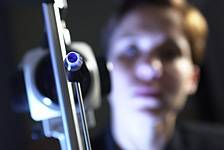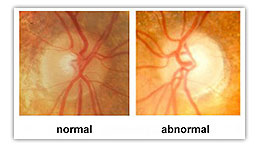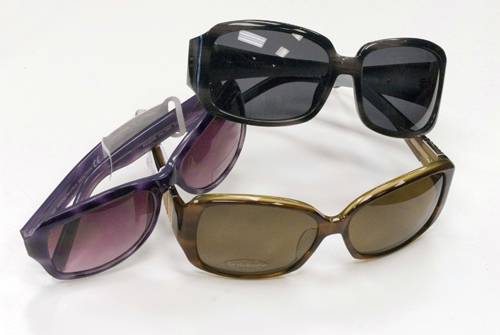Everything You Ever Needed To Know About Cataracts
According to the American Academy of Ophthalmology (AAO), cataracts affect more than 24.4 million Americans age 40 and older. And by age 75, approximately half of all Americans have cataracts. As the U.S. population ages, more than 30 million Americans are expected to have cataracts by the year 2020.
The good news is that cataracts are very treatable. More than 2 million men and women undergo cataract surgery every year, making the procedure one of the most common and successful medical procedures performed in the U.S. today.
What Is A Cataract?
A cataract is a clouding of the usually transparent lens in your eye. The lens focuses light onto the retina at the back of your eye, allowing you to see. When your natural lens starts to cloud up, the images projected onto your retina become blurry and unfocused. It’s like looking through a dirty or cloudy window. If the window is not clear, you can’t see!
Cataracts are a natural part of the aging process, so if you live long enough, you will likely eventually develop one.
Symptoms Of Cataracts
Cataracts come with warning signs; they don’t suddenly develop overnight. Symptoms vary from person to person but common symptoms include:
“Washed Out” Vision or Double Vision
This occurs when people and objects appear hazy, blurred or “washed out” with less definition, depth and color. This makes many normal daily activities, including reading, watching television, driving or doing basic chores, a challenge.
Increased Glare Sensitivity
This can happen both from outdoor sunlight or light reflected off shiny objects indoors. Glare sensitivity can cause problems with driving, particularly at night.
Dulled Colors
This is when colors don’t appear as vibrant as they once did. Distinguishing colors may become difficult as well.
Compromised Contrast And Depth Perception
These important eye skills are greatly affected by the damage to the lens a cataract can cause.
Darkened Vision
This often affects individuals with cataracts, causing them to need more light than they used to in order to see clearly and perform basic activities, especially reading.
(Insert Cataract Self Evaluation Quiz)
Causes Of Cataracts (Risks)
Age is not the only risk factor for cataract development although it is the primary one. While the risk of developing a cataract does increase as you age, it is not the only factor. Other risk factors include:
- Family history
- Injury to the eye
- Certain medications (e.g., steroids)
- Diseases such as diabetes and macular degeneration
- Alcohol consumption
- Smoking
- Prolonged exposure to the sun
- Certain eye conditions such as uveitis
- Cataracts can also be congenital (present at birth)
What You Can Do To Reduce Your Risks
Don’t let cataracts interfere with your quality of life. The best preventive measure is being sure to schedule regular eye exams so that you stay on top of your overall eye health.
While doctors still don’t know exactly how much each risk factor leads to cataracts, there are a few ways you can keep your eyes healthy and reduce your risk of developing a cataract:
- Refrain from smoking and high alcohol consumption
- Exercise and eat well, including lots of fruits and vegetables that contain antioxidants
- Protect your eyes from UV radiation from sunlight
- Control diabetes and hypertension
- Most importantly, see your eye doctor regularly for a comprehensive eye exam. If you are over 40 or at risk, make sure to schedule a yearly comprehensive eye exam.
Because cataracts typically develop slowly over a long period of time, most people don’t even realize the lens in the eye is affected until their vision becomes dull or blurry. When a cataract begins to affect your ability to perform normal daily tasks, it is time for treatment.
Cataracts cannot be treated with medication, dietary changes or eye drops. They will not heal or even improve on their own. Surgery is the only option. Fortunately, modern cataract surgery is low risk and enjoys an excellent success rate. It is relatively non-invasive, often requiring no more than a tiny laser-assisted incision, performed in an outpatient setting.
Eye Medical Clinic is a regional leader in modern cataract surgery. Our own Dr. Mona Bagga is a board-certified ophthalmologist with fellowship training in cataract surgery. She is experienced, having completed more than 10,000 cataract surgeries in her career (so far!) and is a respected regional leader in modern cataract surgery.
Cataract Surgery
Cataract surgery is one of the most common surgeries performed today.
It is regarded as one of the safest and most effective surgeries performed in America, having a 90% success rate (patient has improved vision, between 20/20 and 20/40 following the procedure).
The most recent breakthrough in cataract surgery is the introduction of the cataract laser. Eye Medical Clinic is always at the front of the line where new technology is concerned, offering the latest FDA-approved laser cataract technology for your cataract surgery procedure. The experienced, board-certified surgeons believe this technology adds to the safety, accuracy and precision of the procedure.
Laser cataract surgery, like traditional cataract surgery, is a safe procedure in which your eye’s cloudy natural lens is gently removed and replaced with a clear artificial lens implant. But unlike traditional bladed cataract surgery where the incisions are made by hand, the laser automates key steps of the cataract surgery procedure.
Its software system analyzes high-resolution images of your eye, helping your surgeon design and perform a highly customized procedure. To further enhance accuracy, a patient interface connects your eye to the image-guided surgical unit, so both the computer, and the surgeon operating it, have precise, real-time images throughout the entire procedure.
Intraocular Lenses (IOLs)
A monofocal lens is not considered a Premium Lens. It is the basic lens that would be covered by Medicare and private insurance. Although standard cataract surgery has been proven very successful at removing cataracts and replacing the eye’s natural lens with a clear monofocal lens, it is important to know that many people find they still need glasses, bifocals or multifocals in order to achieve their best vision.
Compared to standard intraocular lenses, Premium Lens Implants can greatly reduce or even eliminate the need for glasses after your cataract surgery procedure. It is important to note, however, that unlike traditional cataract technology and surgery options, Premium Lens Implant packages are not covered entirely by Medicare and insurance payers.
Premium Lens Implants
Major advances in lens technology allow people just like you to continue to live your life the way you want to live it – even after cataract surgery. Eye Medical Clinic offers a variety of Premium Lens Implants that can correct your cataracts AND get you out of your glasses or bifocals.
Multifocal Lenses are created to improve distance and near focus, while Toric lenses are designed to correct astigmatism. While there are no lens options that can definitively promise 20/20 vision at all distances, most people who choose a Premium Lens Implant for their cataract surgery procedure at Eye Medical Clinic are glasses-free for most daily activities.
Before the Surgery
Prior to cataract surgery at Eye Medical Clinic, you will have a complete eye examination that includes a thorough medical history. This exam will be performed by one of our experienced board-certified ophthalmologists.
You’ll also have a pre-operative consultation that will include a discussion about your expectations for your vision following cataract surgery. It’s very helpful to come with a list of questions and concerns so that you leave the consultation feeling confident and fully informed about your surgery.
During the Surgery
During your cataract surgery, your Eye Medical Clinic surgeon will make a tiny incision in your eye to remove the cloudy lens and replace it with a clear artificial lens. The new lens can’t be seen or felt and is designed to stay inside the eye permanently. The incision is so small that no stitches are required and it will heal completely on its own. No hospital stay required!
Post-Surgery
Thanks to advances in technology, recovery from cataract surgery is remarkably fast. Most people return to normal activities within 24 to 48 hours of their procedure but strenuous physical activity should be avoided for several weeks. You will not be able to drive home from the procedure and shouldn’t get behind the wheel until you have been given approval by your doctor after a follow-up exam the next day.
The eye may take several weeks to heal completely – your Eye Medical Clinic doctor will guide you through the postoperative process for best results.
Restored Vision, Renewed Outlook
Eye Medical Clinic is proud to offer the latest techniques and technologies in the field of cataract surgery. If you’re ready to take the next steps toward enjoying restored vision and getting back to what it is you like to do with your life, schedule your cataract evaluation today.









Recent Comments